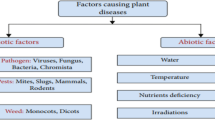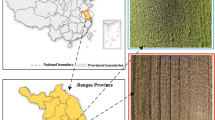Abstract
Rice is an essential staple food for human nutrition. Rice varieties worldwide have been planted, imported, and exported. During production and trading, different types of rice can be mixed. Due to rice impurities, rice importers and exporters may lose trust in each other, requiring the development of a rice variety identification system. India is a significant player in the global rice market, and this extensive study delves into the importance of rice there. The study uses state-of-the-art deep learning and TL classifiers to tackle the problems of rice variety detection. An enormous dataset consisting of more than 600,000 rice photographs divided into 22 different classes is presented in the study to improve classification accuracy. With a training accuracy of 96% and a testing accuracy of 80.5%, ResNet50 stands well among other deep learning models compared by the authors. These models include CNN, Deep CNN, AlexNet2, Xception, Inception V3, DenseNet121, and ResNet50. Finding the best classifiers to identify varieties accurately is crucial, and this work highlights their possible uses in rice seed production. This paper lays the groundwork for future research on image-based rice categorization by suggesting areas for development and investigating ensemble strategies to improve performance.



















Similar content being viewed by others
Data availability
Data will be available on request.
References
Sharma K, Sharma C, Sharma S, Asenso E (2022) Broadening the research pathways in smart agriculture: predictive analysis using semiautomatic information modeling. J Sensors 2022:5442865. https://doi.org/10.1155/2022/5442865
Aukkapinyo K, Sawangwong S, Pooyoi P, Kusakunniran W (2020) Localization and classification of rice-grain images using region proposals-based convolutional neural network. Int J Autom Comput 17(2):233–246
George M, Chacko A (2019) S. K. K.-P. of the 20th International, and undefined 2019, Proactive diabetes management: research directions, dl.acm.org, 486–491. https://doi.org/10.1145/3288599.3297119
Zareiforoush H, Minaei S, Alizadeh MR, Banakar A (2015) Potential applications of computer vision in quality inspection of rice: a review. Food Eng Rev 7(3):321–345
Grinberg NF, Orhobor OI, King RD (2020) An evaluation of machine-learning for predicting phenotype: studies in yeast, rice, and wheat. Mach Learn 109(2):251–277
Liu T, Chen W, Wu W, Sun C, Guo W, Zhu X (2016) Detection of aphids in wheat fields using a computer vision technique. Biosyst Eng 141:82–93
Lin P, Li XL, Chen YM, He Y (2018) A deep convolutional neural network architecture for boosting image discrimination accuracy of rice species. Food Bioprocess Technol 11(4):765–773
Ahmed T, Rahman CR, Abid M, Mahmud F (2004) Rice grain disease identification using dual phase convolutional neural network based system aimed at small dataset, ar**v Prepr. ar**v09870, 2020
Sun C et al (2014) Evaluation and analysis the chalkiness of connected rice kernels based on image processing technology and support vector machine. J Cereal Sci 60(2):426–432
MousaviRad SJ, Rezaee K, Nasri K (2012) A new method for identification of Iranian rice kernel varieties using optimal morphological features and an ensemble classifier by image processing. Majlesi J Multimed Process 1(3)
Sood P, Sharma C, Nijjer S et al (2023) Review the role of artificial intelligence in detecting and preventing financial fraud using natural language processing. Int J Syst Assur Eng Manag 14:2120–2135. https://doi.org/10.1007/s13198-023-02043-7
Kaya E, Saritas İ (2019) Towards a real-time sorting system: identification of vitreous durum wheat kernels using ANN based on their morphological, colour, wavelet and gaborlet features. Comput Electron Agric 166:105016
Cortes C, Vapnik V (1995) Support-vector networks. Mach Learn 20(3):273–297
Liu T et al (2016) A shadow-based method to calculate the percentage of filled rice grains. Biosyst Eng 150:79–88
Kuldeep S (2012) Scope for enhancing and sustaining rice productivity in Punjab (food bowl of India). Afr J Agric Res 7(42):5611–5620
Sakshi P, Das S, Jain C, Sharma KV (2022) Deep learning: an application perspective. Cyber Intell Inf Retriev: Proc CIIR 2021:323–333
Gudipalli A, Prabha A, Reddy P (2016) A review on analysis and grading of rice using image processing. ARPN J Eng Appl Sci 11(23):2006–2016
Raj MP, Swaminarayan PR, Saini JR, Parmar DK (2015) Applications of pattern recognition algorithms in agriculture: a review. Int J Adv Netw Appl 6(5):2495
Herath K, de Mel WR (2016) Rice grains classification using image processing technics. Department of Mechanical Engineering, The Open University of Sri Lanka, Nawala Nugegoda, Sri Lanka
Qiu Z, Chen J, Zhao Y, Zhu S, He Y, Zhang C (2018) Variety identification of single rice seed using hyperspectral imaging combined with convolutional neural network. Appl Sci 8(2):212
Fouladi S, Safaei AA, Mammone N, Ghaderi F, Ebadi MJ (2022) Efficient deep neural networks for classification of Alzheimer’s disease and mild cognitive impairment from scalp EEG recordings. Cognit Comput 14(4):1247–1268
Fouladi S, Ebadi MJ, Safaei AA, Bajuri MY, Ahmadian A (2021) Efficient deep neural networks for classification of COVID-19 based on CT images: virtualization via software defined radio. Comput Commun 176:234–248
Zamani MG, Nikoo MR, Jahanshahi S et al (2023) Forecasting water quality variable using deep learning and weighted averaging ensemble models. Environ Sci Pollut Res 30:124316–124340. https://doi.org/10.1007/s11356-023-30774-4
Chatnuntawech I, Tantisantisom K, Khanchaitit P, Boonkoom T, Bilgic B, Chuangsuwanich E (2018) Rice classification using spatio-spectral deep convolutional neural network. ar**v Prepr. ar**v1805.11491
Lin P, Chen Y, He J, Fu X (2017) Determination of the varieties of rice kernels based on machine vision and deep learning technology. In: 2017 10th International Symposium on Computational Intelligence and Design (ISCID), vol 1. pp 169–172
Dheer P, Singh RK, and Others (2019) Identification of Indian rice varieties using machine learning classifiers. Plant Arch 19(1):155–158
Cinar I, Koklu M (2019) Classification of rice varieties using artificial intelligence methods. Int J Intell Syst Appl Eng 7(3):188–194
Kumar MS, Javeed M (2019) An efficient rice variety identification scheme using shape, Harlick \& color feature extraction and multiclass SVM. Int J Eng Adv Technol 8(6):3629–3632
Sethy PK, Chatterjee A (2018) Rice variety identification of western Odisha based on geometrical and texture feature. Int. J. Appl. Eng. Res. 13(4):35–39 (ISSN 09734562)
Nagoda N, Ranathunga L (2018) Rice sample segmentation and classification using image processing and support vector machine. In: 2018 IEEE 13th International Conference on Industrial and Information Systems (ICIIS), pp 179–184
Desai S, Rao AP (2017) Seed quality analysis using image processing and ANN. Int J Trend Sci Res Dev 1(4):2456–6470
Rexce J, Devi UK (2017) Classification of milled rice using image processing. Int J Sci Eng Res 8(2):10–14
Fayyazi S, Abbaspour-Fard MH, Rohani A, Monadjemi SA, Sadrnia H (2017) Identification and classification of three Iranian rice varieties in mixed bulks using image processing and MLP neural network. Int J Food Eng 13:5
Huang C, Liu L, Yang W, **ong L, Duan L (2015) Rapid identification of rice varieties by grain shape and yield-related features combined with multi-class SVM. In: Int Conf Comput Computing Technol Agric 390–398
Wu LL, Wu J, Wen YX, **ong LR, Zheng Y (2013) Classification of single cereal grain kernel using shape parameters based on machine vision. Adv Mater Res 605:2179–2182
Gujjar HS, Siddappa DM (2013) A method for identification of basmati rice grain of India and its quality using pattern classification. Int J Eng Res Appl 3(1):268–273
Silva CS, Sonnadara DUJ (2013) Classification of rice grains using neural networks. Proc Tech Sess 29:9–14
Kambo R, Yerpude A (2013) Classification of basmati rice grain variety using image processing and principal component analysis. IJAREEIE 2(7):2893–2900
Lilhare SF, Bawane NG (2012) Classification of paddy Varieties using Image processing. In: Nat Conf Innov Paradigms Eng Technol 33–35
Baral A, Sadegh Nasr M, Darghiasi P, Abediniangerabi B, Shahandashti M (2022) Detection and classification of vegetation for roadside vegetation inspection and rehabilitation using deep learning techniques. In: Int Conf Trans Dev 2022:143–152
Panahabadi R, Ahmadikhah A, McKee LS, Ingvarsson PK, Farrokhi N (2022) Genome-wide association study for lignocellulosic compounds and fermentable sugar in rice straw. Plant Genome 15(1):e20174
Hassan MA, Dahu N, Hongning T, Qian Z, Yueming Y, Yiru L, Shimei W (2023) Drought stress in rice: morpho-physiological and molecular responses and marker-assisted breeding. Front Plant Sci 14:1215371
Gautam S, Sharma C, Kukreja V, Others (2021) Handwritten Mathematical symbols classification using WEKA. In: Applications of Artificial Intelligence and Machine Learning. Springer, pp 33–41
Ebrahimi E, Mollazade K, Babaei S (2014) Toward an automatic wheat purity measuring device: a machine vision-based neural networks-assisted imperialist competitive algorithm approach. Measurement 55:196–205
Shrestha BL, Kang Y-M, Yu D, Baik O-D (2016) A two-camera machine vision approach to separating and identifying laboratory sprouted wheat kernels. Biosyst Eng 147:265–273
Vargas R, Mosavi A, Ruiz R (2018) Deep learning: a review. Preprints 2018100218. https://doi.org/10.20944/preprints201810.0218.v1
Kolkure VS, Shaikh BN (2017) Identification and quality testing of rice grains using image processing and neural network. Int J Recent Trends Eng Res 3(1):130–135
Sidnal N, Patil UV, Patil P (2013) Grading and quality testing of food grains using neural network. Int J Res Eng Technol 2(11):545–549
Albawi S, Mohammed TA, Al-Zawi S (2018) Understanding of a convolutional neural network. In: Proceedings of 2017 International Conference on Engineering and Technology, ICET 2017. https://doi.org/10.1109/ICEngTechnol.2017.8308186
He K, Zhang X, Ren S, Sun J (2016) Deep residual learning for image recognition. In: Proceedings of the IEEE Conf Comput Vis Pattern Recognition 770–778
Yao G, Lei T, Zhong J (2019) A review of convolutional-neural-network-based action recognition. Pattern Recognit Lett 118:14–22
Abu MA, Indra NH, Rahman AHA, Sapiee NA, Ahmad I (2019) A study on image classification based on deep learning and Tensorflow. Int J Eng Res Technol 12(4):563–569
Krizhevsky A, Sutskever I, Hinton GE (2012) Imagenet classification with deep convolutional neural networks. Adv Neural Inf Process Syst 25:1097–1105
Zhang J, Feng Z (2019) Inception DenseNet With Hybrid Activations For Image Classification. In: 6th International Conference on Systems and Informatics (ICSAI), pp 1295–1301
Author information
Authors and Affiliations
Corresponding author
Ethics declarations
Conflict of interest
The author declares that they have no known competing financial or personal relationship that could have appeared to influences the work reported in this paper.
Additional information
Publisher’s Note
Springer Nature remains neutral with regard to jurisdictional claims in published maps and institutional affiliations.
Rights and permissions
Springer Nature or its licensor (e.g. a society or other partner) holds exclusive rights to this article under a publishing agreement with the author(s) or other rightsholder(s); author self-archiving of the accepted manuscript version of this article is solely governed by the terms of such publishing agreement and applicable law.
About this article
Cite this article
Sharma, K., Sethi, G.K. & Bawa, R.K. A comparative analysis of deep learning and deep transfer learning approaches for identification of rice varieties. Multimed Tools Appl (2024). https://doi.org/10.1007/s11042-024-19126-7
Received:
Revised:
Accepted:
Published:
DOI: https://doi.org/10.1007/s11042-024-19126-7




